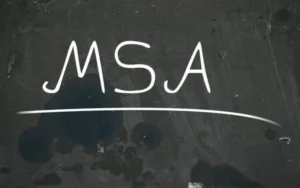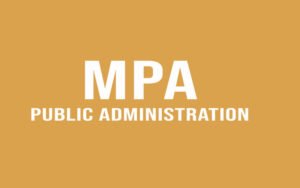What Is a High-Ratio Loan?
A high-ratio loan is a loan with a high loan value compared to the collateral property value. High-ratio mortgages are close to 100% of the property’s worth. An authorized high-ratio loan may be available to borrowers who cannot make a sizeable down payment.
Mortgages with high ratios typically surpass 80% of the property’s value. Financial institutions use the loan-to-value (LTV) ratio to analyze lending risk before authorizing a mortgage.
LTV Formula for High-Ratio Loans
Investors should compute the loan-to-value ratio to determine if the loan exceeds the 80% LTV threshold, as there is no set method for high-ratio loans.
Loan-to-Value Ratio=Mortgage amount/Appraised property value
Calculating High-Ratio Loans Using LTV
- To determine the LTV ratio, divide the loan amount by the property’s appraised value.
- To get a percentage, multiply by 100.
- Your loan has a high ratio if the value after your downpayment exceeds 80% of the LTV.
What Does a High LTV Loan Tell You?
Financial institutions use the LTV ratio to assess mortgage loan risk. A high-ratio loan occurs when a borrower can’t make a large downpayment and the loan value approaches the appraised value. Thus, lenders may reject the application as overly risky when the loan value approaches 100% of the property value.
The lender risks borrower default if the LTV is too high. A bank may be unable to sell the property to satisfy the defaulting borrower’s debt. In an economic downturn, house values drop, making this scenario likely. The debt is underwater if it exceeds the property’s worth. If the borrower fails, the bank will lose money when they sell the property for less than the mortgage debt. Banks check LTV to avoid losses.
Thus, most high-ratio house loans require insurance to safeguard the lender. The borrower must pay private mortgage insurance (PMI) separately to safeguard the lender.
If borrowers have inadequate credit, high-ratio loans may have higher interest rates. Your credit score indicates your capacity to repay debt and your default risk. Low scores mean higher interest rates.
Loan History with High Ratio
Until the 1920s, individuals acquired homes by saving their own money until they had enough land or property for a house. Building and finance businesses arose, offering mortgages for home purchases with installment payments over the years. Even then, loans were usually half the house’s worth.
By the 1920s, banks had made high-ratio loans for up to 80% of the house’s worth. Created to safeguard banks, private mortgage insurance became obsolete in the 1930s due to non-payment by unemployed individuals, causing both the banks and PMI businesses to fail.
Congress established the Home Owners’ Loan Corp., resulting in a mortgage guarantee and a 15% ratio drop. To promote homeownership, the Federal Housing Administration (FHA) and other organizations reduced down payments to low single digits or even 0%.
The mortgage crisis of 2008 marked the end of this system’s prosperous period. Beginning in 2007, a rapid rise in high-risk mortgage defaults led to the worst recession in decades. The mid-2000s housing bubble and low interest rates led several lenders to provide poor-credit house loans. After the real estate bubble broke, many borrowers struggled to pay their subprime mortgages.
Lenders with High Ratio
FHA programs allow applicants to get loans with an LTV ratio of up to 96.5%. So, the scheme demands a 3.5% down payment. For high-ratio loans, the program needs a minimum credit score. Other offers enable a 10% down payment and a lower credit score.
Note that FHA loans demand a mortgage insurance premium (MIP). Once the LTV drops below 80%, the loan is no longer a high-ratio loan, and you can refinance without insurance.
High-Ratio Loan Example
Suppose a borrower wants to buy a $100,000 property. The borrower can only pay $10,000 down and must borrow the remaining $90,000. One lender approves a mortgage at a higher-than-average rate after multiple attempts.
The loan-to-value ratio is 90% (90,000 / 100,000), which is high.
High-Ratio vs. Home Equity Loans
Home equity loans are installments or second mortgages that allow homeowners to borrow against their home’s equity worth. The difference between homeowner equity and the home’s market value determines the loan amount.
A home equity loan is for borrowers with a mortgage, paying down some of it, and a property value greater than the loan sum. Thus, a home equity loan lets homeowners borrow against their home equity. However, a high-ratio loan might exceed 100% of the property’s worth.
Conclusion
- A high-ratio loan has a high loan value relative to the collateral property.
- High-ratio loans have LTVs above 80% of the property’s value and may reach 100%.
- Risky mortgages with high loan ratios have higher interest rates.

























































